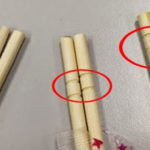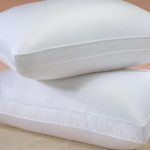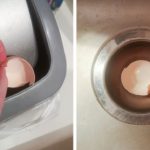1 What are Bamboo Straws?
 Bamboo straws are an eco-friendly alternative
Bamboo straws are an eco-friendly alternative
Bamboo straws are made primarily from bamboo, a sustainable and renewable resource. They typically range from 15-20cm in length and have a diameter of 7-13mm. The bamboo is carefully treated to prevent mold and rot, and to eliminate any distinctive bamboo odor.
Much like conventional straws, bamboo straws are used to enjoy a variety of beverages such as smoothies, shakes, cocktails, and more. Additionally, with proper cleaning and care, bamboo straws are reusable and can serve as a long-lasting alternative to single-use plastic straws.
2 Why Use Bamboo Straws?
 Using bamboo straws is an environmentally-conscious choice
Using bamboo straws is an environmentally-conscious choice
Single-use plastic straws have come under scrutiny due to their negative impact on the environment and potential health risks. Plastic straws often contain BPAs and phthalates, which have been linked to health issues such as obesity, early puberty, and even cancer.
Bamboo straws, on the other hand, offer a more sustainable and healthier alternative. By choosing bamboo straws, you can reduce your plastic waste and contribute to environmental protection. Additionally, with proper care, bamboo straws can be reused multiple times, saving you money and further reducing waste. Furthermore, bamboo straws are naturally biodegradable, so they won’t contribute to landfill waste even when they eventually need to be disposed of.
3 The Intricate Process of Making Bamboo Straws
Steps to Making Bamboo Straws
The process begins with carefully selected bamboo sourced from forests or bushes. The bamboo is then sun-dried for 7-15 days, during which the color of the bamboo changes from green to a uniform yellow.
Once dried, the bamboo is sanded to smoothen any rough spots and remove any nodes. This process is typically done using specialized machinery.
 Drying the bamboo is an important first step
Drying the bamboo is an important first step
The dried and sanded bamboo is then polished to protect the straws, make them waterproof, and give them a natural shine.
The bamboo is then cut into segments of the desired length, typically between 15-20cm.
 Polishing the bamboo gives it a natural shine
Polishing the bamboo gives it a natural shine
The ends of the straws are then scrubbed to remove any remaining debris. This is followed by cleaning the inside of the straws using a high-pressure pump, a brush, and finally, another round of blowing to ensure all dust and debris are removed.
 Scrubbing and cleaning the straws ensures they are safe to use
Scrubbing and cleaning the straws ensures they are safe to use
Final Product
The finished bamboo straws are then packaged in eco-friendly boxes or containers for distribution. To further enhance their longevity, moisture-absorbing packets may be included to prevent mold and extend the shelf life of the straws.

4 Caring for Your Bamboo Straws: Cleaning and Storage
 Proper care can extend the lifespan of bamboo straws
Proper care can extend the lifespan of bamboo straws
To ensure the longevity of your bamboo straws, it is important to source them from a reputable and quality supplier. With proper care, bamboo straws can last for up to 3-6 months.
Cleaning Bamboo Straws
After cleaning, you can also soak the straws in a mixture of warm water with vinegar, baking soda, or a mild salt solution to disinfect and add shine.
Storing Bamboo Straws
Store bamboo straws in a dry place, away from moisture.
When not in use, you can wrap the straws in newspaper or eco-friendly bags for storage.
Discard any straws that show signs of mold, cracking, or breakage to ensure safety.
We hope that this guide has provided you with valuable insights into bamboo straws and their production process. With this knowledge, you can make informed choices and contribute to environmental protection by reducing plastic waste.
Thousands of Photos Captured of Ly Son Homestay with its “Extremely Good” View
Planning a getaway in Quang Ngai province? Ly Son Island could be the perfect destination for you! This unique island offers breathtaking views of its ancient crater, as well as plenty of amazing homestays with excellent views that can provide you with some incredible photo opportunities, ensuring your trip to Ly Son is truly unforgettable.
Exploring the Pros and Cons of Sleeping in an Air-Conditioned Room
Is sleeping with an air conditioner a good idea? As concerns over the adverse effects of air conditioning on our health increase, it’s important to understand the risks and rewards of using air conditioning while sleeping. Let’s examine the benefits and drawbacks of sleeping with an air conditioner, and the protective measures one should take.





































